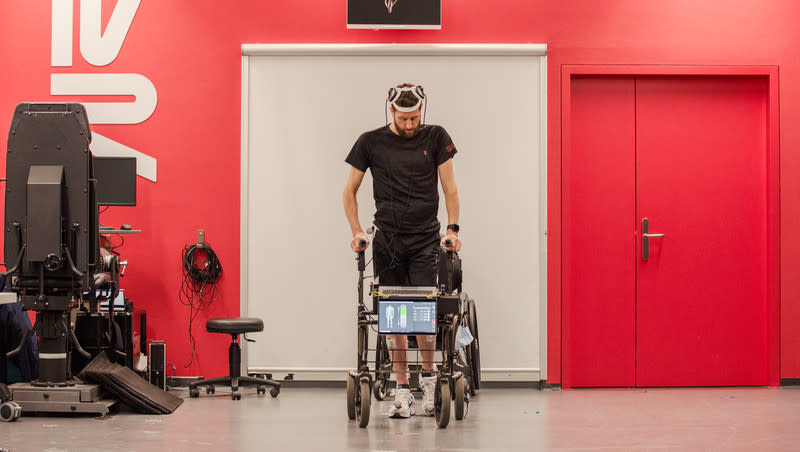New technology has allowed a paralyzed man to walk again using brain signals

In 2011, Netherland native Gert-Jan Oskam was told he would never walk again after breaking his neck in a motorcycle accident in China. However, new research, as reported in the journal Nature, has helped Oskam to regain mobility in the lower half of his body with assistance from technology.
Electrode implants in his brain allow Oskam to send mental signals into an algorithm that processes them into pulses. The pulses are then sent to electrodes that have been inserted in his spine to activate the nerves and awaken his muscles to create movement.
“We’ve captured the thoughts of Gert-Jan, and translated these thoughts into a stimulation of the spinal cord to reestablish voluntary movement,” Grégoire Courtine, a spinal cord specialist at the Swiss Federal Institute of Technology, Lausanne, and lead researcher on the study, said at a press briefing, per The New York Times.
The brain-spine interface, as researchers call it, has given Oskam more control than any other study or physical therapy in which he has previously participated.
Related
New research allows scientists to study brain signals connected to chronic pain
Severe sleep apnea could harm future brain health, study finds
Before, Oskam was part of a study conducted by Courtine that used technology to stimulate the spine’s nerves and improve mobility in people with spinal cord injuries. After three years, Oskam’s improvements plateaued.
Courtine is calling the brain-spine interface the “Digital Bridge” because it allows Oskam’s motions to be signaled by his own thoughts, making it less robotic and unnatural. After a couple of weeks of training, Oskam was able to walk without assistance from a walker and climb up an inclined ramp with little help.
Oskam feels like he has control of his body again, he said.
“I feel like a toddler, learning to walk again,” Oskam told BBC. “It has been a long journey, but now I can stand up and have a beer with my friend. It’s a pleasure that many people don’t realize.”
Researchers on the study are hoping that this technology has the potential to help people who don’t have the ability to use their arms and hands, or people who have suffered a stroke.
Because of the progress that Oskam has made in the years following his accident, the research team believes people who have sustained more recent injuries have the potential for greater improvement.
In Oskam’s case, “It’s more than 10 years after the spinal cord injury,” Courtine said. “Imagine when we apply the digital bridge a few weeks after spinal cord injury. The potential for recovery is tremendous,” he added, per The Guardian.

